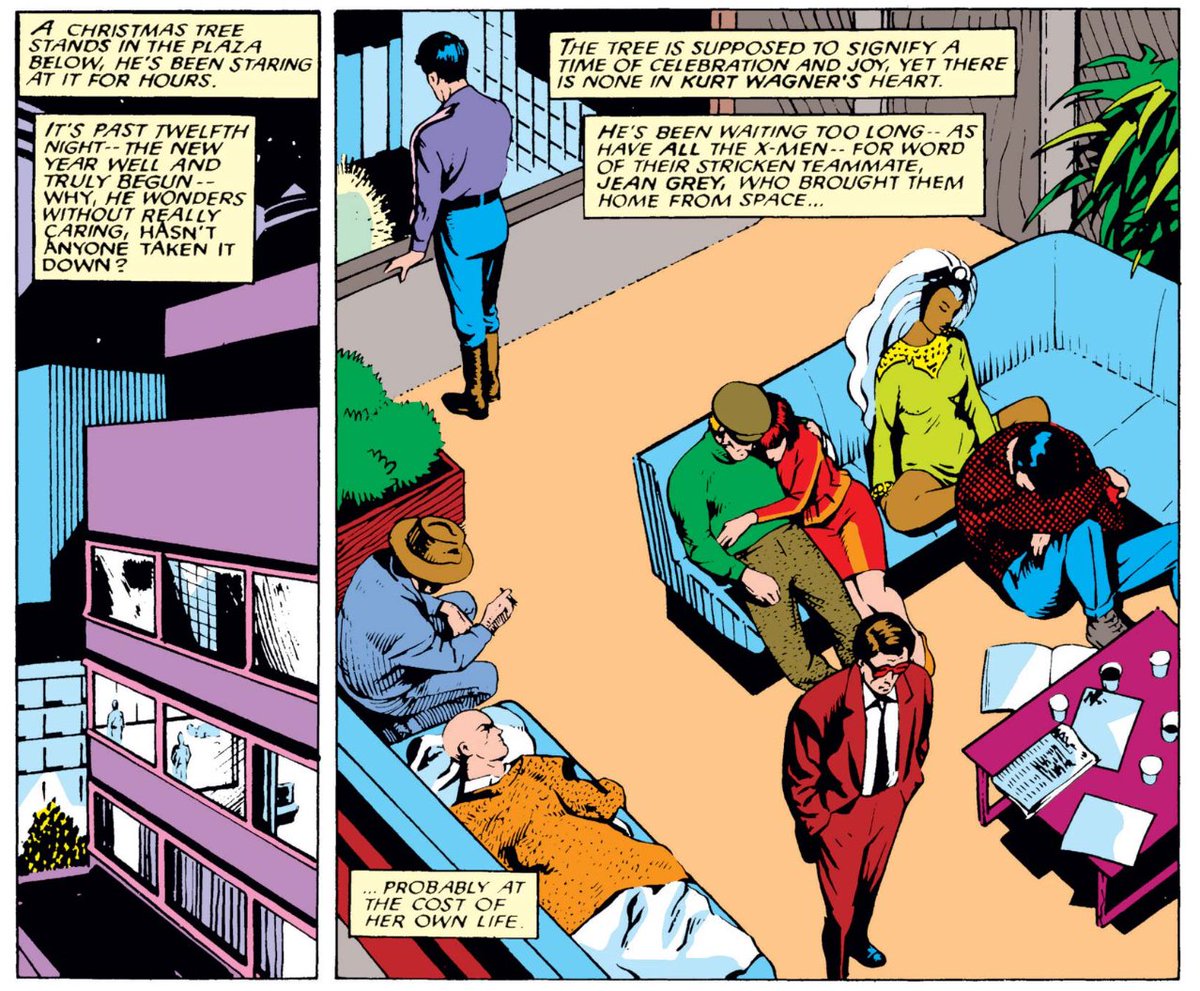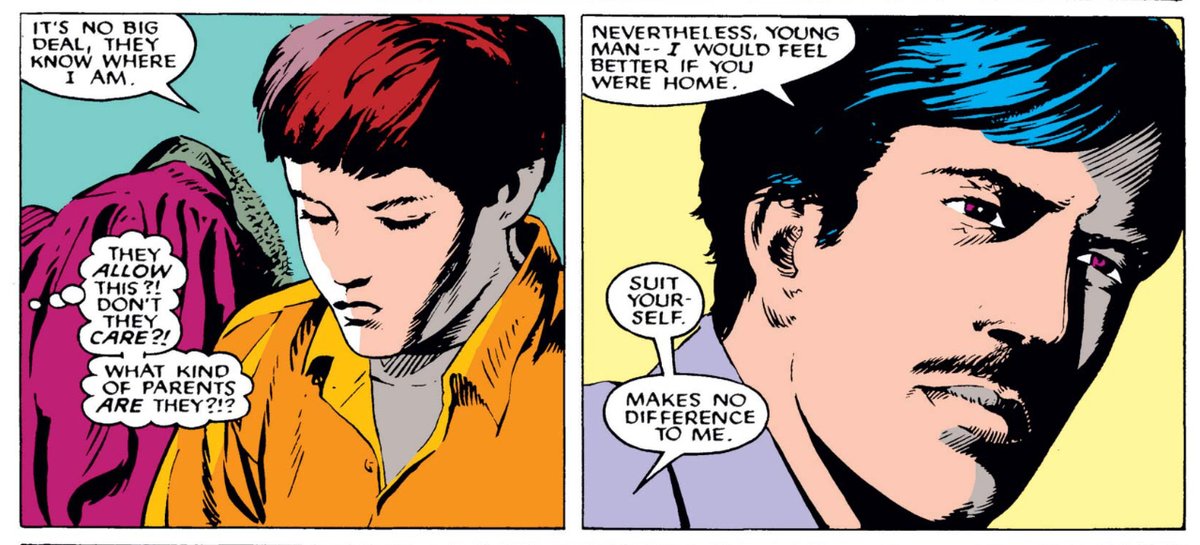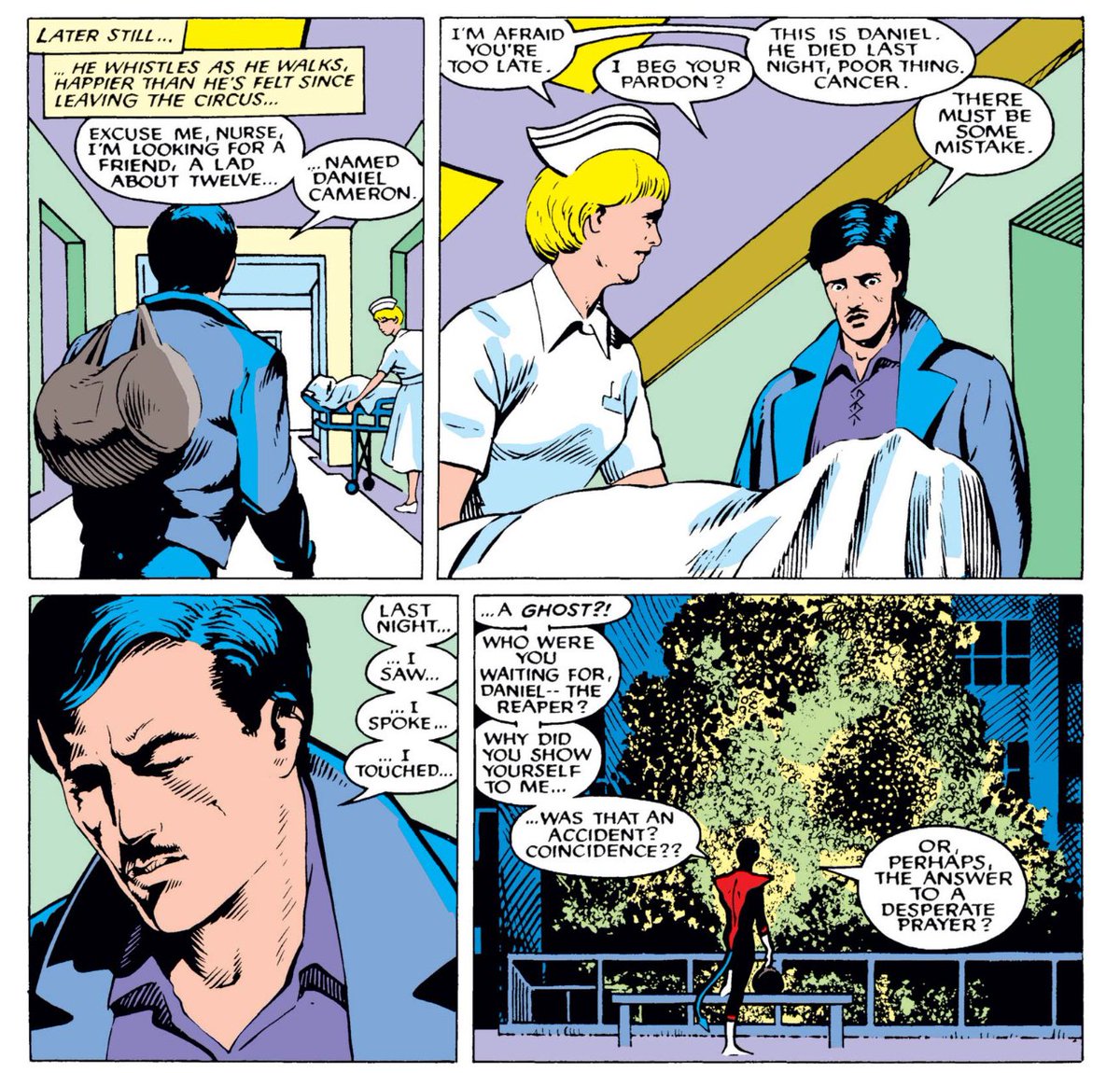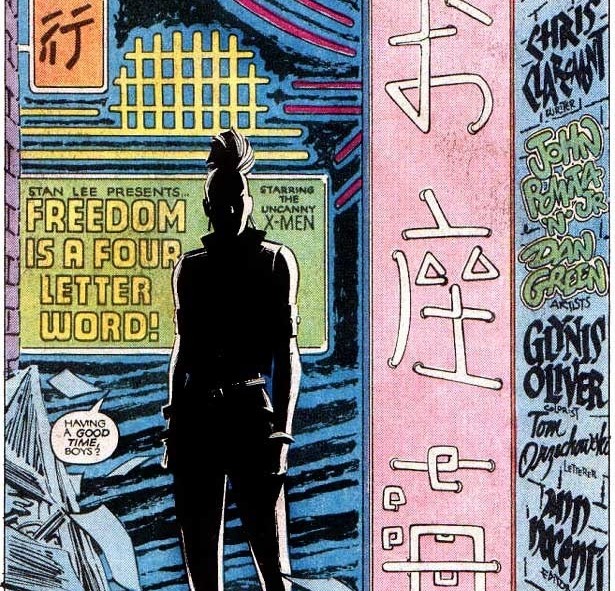Inherently and individually, Claremont & John Bolton’s “Classic X-Men” vignettes often contemplate the art of storytelling. In “The Gift” from CXM #9, Nightcrawler, a fantastic being & performer with a deep love for popular stories, is an ideal conduit for this theme. 1/13 #XMen 

The story opens in a New York hospital, where the X-Men await news of Jean Grey, hovering between life & death after saving the team. The team’s naturalistic poses, rendered impeccably by Bolton, emphasize their close, complex bonds. But Kurt chooses to stand apart. 2/13 

Kurt is also forced to stand apart; sharing the vigil means using an “image inducer” to hide his true appearance. Yet Kurt doesn’t adopt a generic face; instead, he resembles Errol Flynn. Hence, he’s not simply hiding; he’s performing a specific glamorous identity. 3/13 

Yet Kurt’s melancholy reflection affirms his inescapable difference; he sees through his own glamour. But his difference also informs his empathy. This manifests in Kurt teleporting to the street to help a lonely, despondent boy no one else seems to see. 4/13 

A cop’s intrusion highlights the risk Nightcrawler takes trying to help the boy. Kurt faces the constant threat of being outed; his true appearance has often inspired violence. He is also a man with a foreign accent in an alley at night with someone else's child. 5/11 

The cop leaves, and Kurt does all the responsible, logical things in an effort to help Daniel. He asks about his parents, buys him food, and listens. But Kurt’s generic words & glamorous face fail to earn Daniel’s trust; he reveals he’s been sick, but refuses to say more. 6/11 

Kurt finally connects with Daniel by revealing glimpses of his real self, in the form of gifts extending from his mutant body. He makes Daniel smile by walking effortlessly on his hands then teleports to stop him running into Central Park, initiating a game of tag. 7/11 

Then, Kurt teaches Daniel to juggle. It’s a lengthy sequence, which can feel jarring between the weighty emotions & life-and-death stakes that bracket it. But the sequence is lengthy for a reason—because it’s where Claremont signposts this as a story about storytelling. 8/11 

Juggling is deeply symbolic. Idiomatically, it’s often linked to managing responsibilities. It’s also sleight of hand; the illusion of weightlessness & perpetual motion makes mundane objects magical. Kurt is teaching Daniel the art of performance—and creation. 9/11 

“Magic isn’t a matter of power,” says Kurt. “It’s the creation of a state of mind that becomes a state of being. So convincing... a game of ‘let’s pretend’ that the audience willingly, eagerly believes your illusions are real.” Thus, performers are artists & vice versa 10/11 

Kurt’s decision to show Daniel his true form reminds us truth matters; chosen illusions are different from forced ones. But Daniel’s eager acceptance also suggests the ways fantasy can foster truth; empathy requires imagination and being open to new ways of seeing. 11/13 

The twist—that Daniel may be a ghost—could undercut the character building, reframing it as a dream. Yet it also reinforces Kurt’s outsider empathy; this liminal monster-hero who routinely teleports through another dimension can perceive things others can’t. 12/13 

Moreover, revealing Daniel’s liminal status can bolster the thematic bond between Kurt & Daniel, further emphasizing the transformative power of art & performance. Daniel, like Kurt, both is & isn’t what he seems. And Kurt, like Daniel, becomes real through our love. 13/13 

Today's thread written by Dr. Anna Peppard (@peppard_anna) who is currently doing a Kurt-themed 100% charity project with a limited run of "BAMF" shirts:
https://twitter.com/GoshGollyWow/status/1506982603555061761?t=tJ72hWMMo1bY74SB9kIZdg&s=19&fbclid=IwAR3p96OLpFaYItZme7kT-ykVP1mmdmAlOCb2KK7oZq5OauQTV2-bRx61yRs
• • •
Missing some Tweet in this thread? You can try to
force a refresh






















